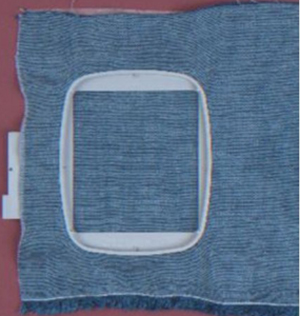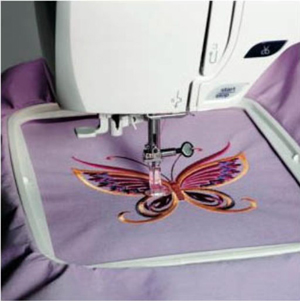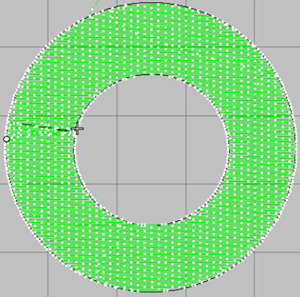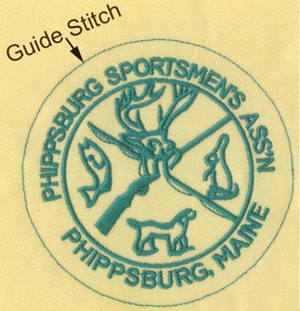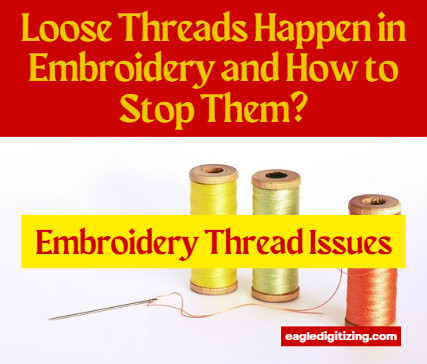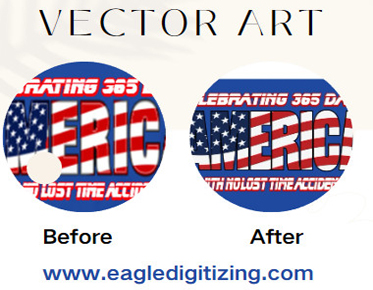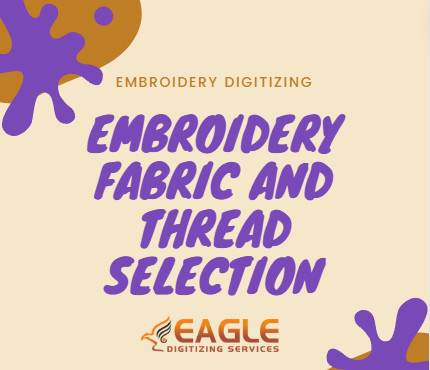Digitizing Glossary
Embroidery Digitizing: Embroidery Digitizing or Embroidery Punching is the process of converting artwork into digital data that tells a computerized embroidery machine how to move during the embroidery process. |
Embroidery Hoop: A device made from wood, plastic or steel with which fabric is gripped tightly between an inner ring and an outer ring and attached to the machine's pantograph. Machine hoops are designed to push the fabric to the bottom of the inner ring and hold it against the machine bed for embroidering. |
Expanded Format: A design program where individual stitches in a design have been specifically digitized for a certain size. Embroidery designs punched in this format cannot generally be enlarged or reduced more than 10 to 20 percent without distortion because stitch count remains constant. See "condensed format". |
Flat embroidery: Embroidery that is framed in hoops, usually exclusively on the top of the embroidery machine's hook assembly. |
Fill Stitch: A fill stitch is used to cover a large area in a embroidery design. Fill stitches can be aligned to create patterns or they can change direction to provide different effects from within the design.
|
Format: Machine specific readable information. |
Finishing: Processes performed after embroidery is complete. Includes trimming loose threads, cutting or tearing away excess backing, removing topping, cleaning any stains, pressing or steaming to remove wrinkles or hoop marks and packaging for sale or shipment. |
Geflect: As the same as fill stitch, please see Fill Stitch. |
Guide Stitch: Running stitches used to assist in placement of an applique or in the placement of a die for cutting of emblems, also called a cut line. |
Hoop size: Machine embroidery hoops are available in a variety of sizes. They are machine specific and must be designed for the machine you are using. The size of the hoop you use will be determined by the design you are embroidery. The closer the hoop size is to the design, the less likely there will be any movement of the fabric. Movement of the fabric can result in the final stitches being poorly located on the design. |












Recent Articles
Latest Blog Post
Why Do Loose Threads Happen in Embroidery and How to Stop Them?
Have you ever found yourself delicately stitching away, only to be frustrated by the appearance of loose threads? How do these pesky strands infiltrate our carefully crafted...
Read MoreTips for Selecting the Right Format for Your Vector Graphics Needs
Vector graphics are a cornerstone of modern design, providing unparalleled flexibility and scalability. The importance of choosing the right format cannot be overstated, as...
Read MoreWhat Best Practices for Embroidery Fabric and Thread Selection to Enhance Design Quality?
Have you ever wondered what separates a mediocre embroidery design from a masterpiece? The secret lies in fabric and thread selection. Join us as we unravel the best practices...
Read More
